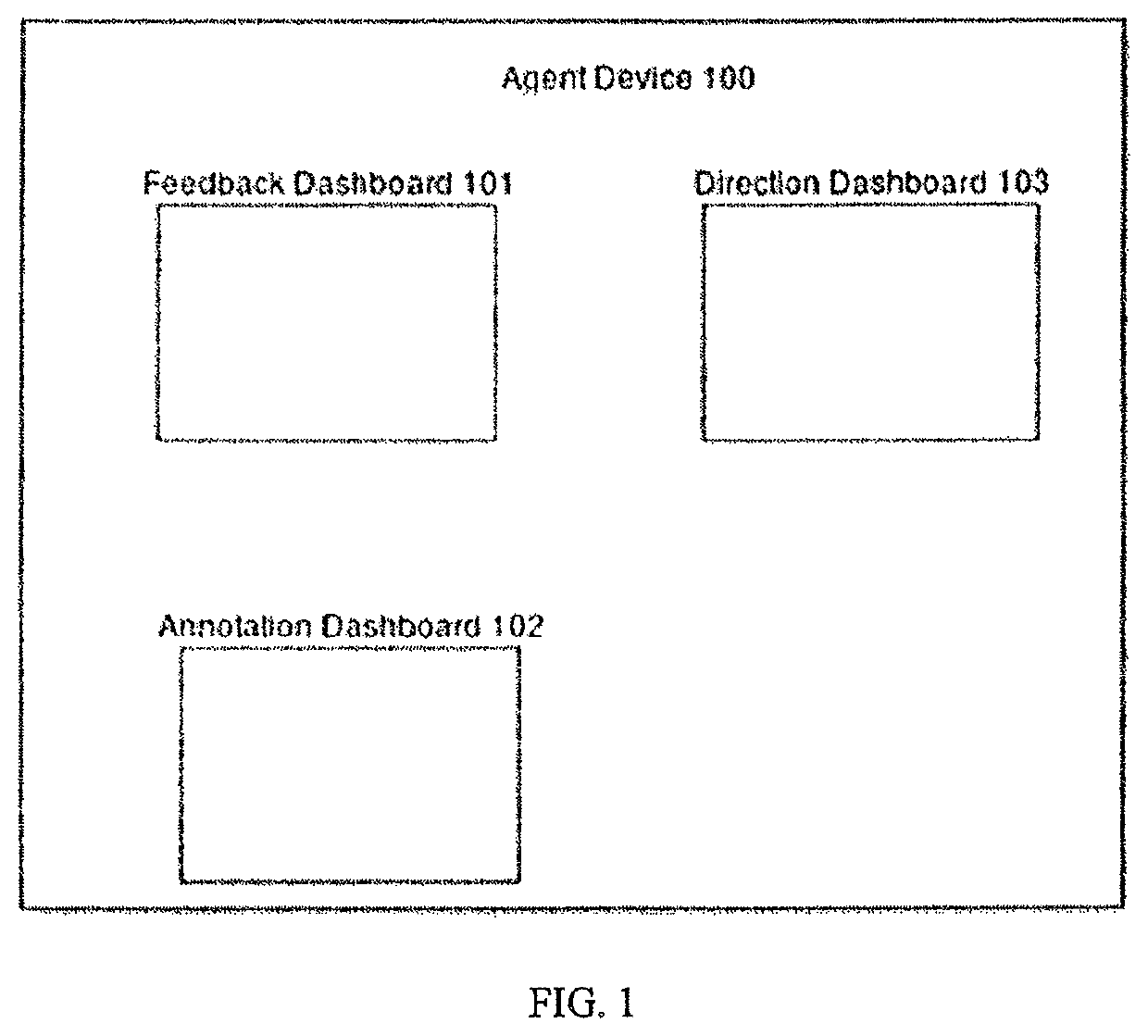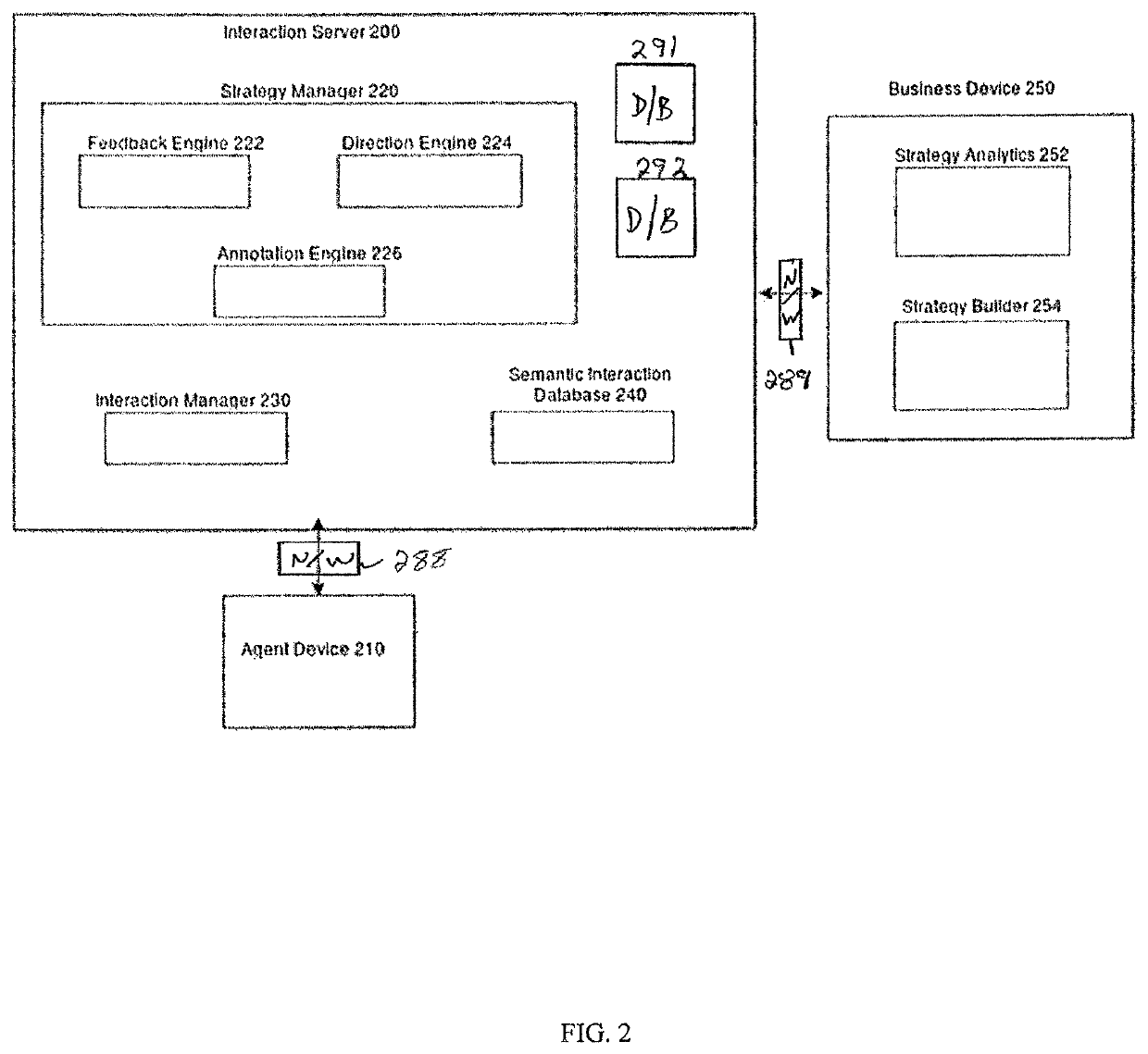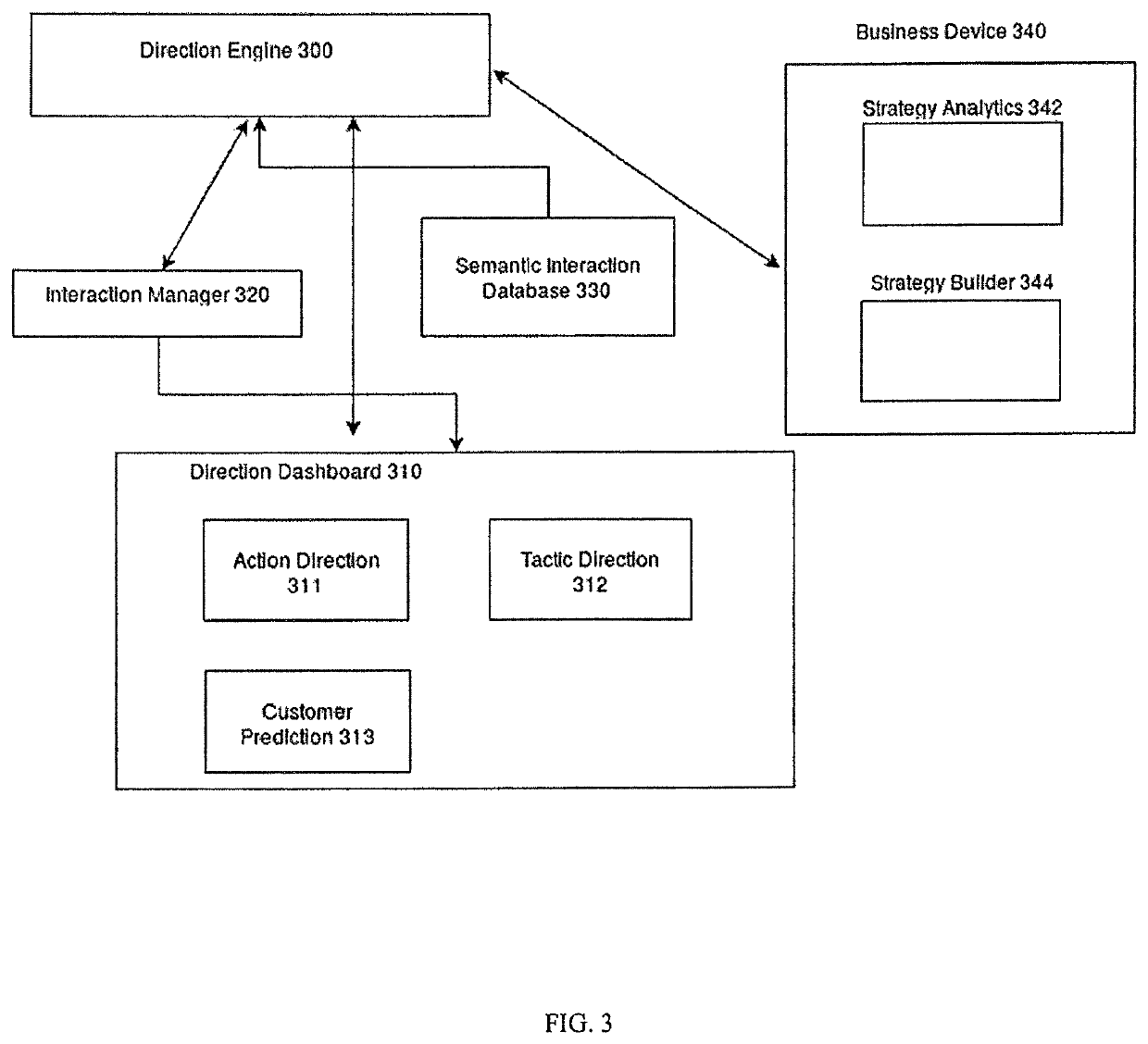Method, apparatus, and computer-readable media for customer interaction semantic annotation and analytics
a customer interaction and semantic annotation technology, applied in the field of customer relationship management, can solve the problems of not being able to provide continuous feedback, not being able to perform adaptive natural language generation for agents, and not being able to manage the information-state of customers, so as to improve the management of customer interactions and the rapid design of new interaction strategies.
- Summary
- Abstract
- Description
- Claims
- Application Information
AI Technical Summary
Benefits of technology
Problems solved by technology
Method used
Image
Examples
Embodiment Construction
[0019]A “device” in this specification may include, but is not limited to, one or more of, or any combination of processing device(s) such as, a cell phone, a Personal Digital Assistant, a smart watch or other body-borne device (e.g., glasses, pendants, rings, etc.), a personal computer, a laptop, a pad, a cloud-access device, and / or any device capable of sending / receiving messages to / from a local area network or a wide area network (e.g., the Internet), such as devices embedded in cars, trucks, aircraft, household appliances (refrigerators, stoves, thermostats, lights, electrical control circuits, the Internet of Things, etc.).
[0020]An “engine” is preferably a program that performs a core or essential function for other programs. An engine can be a central or focal program in an operating system, subsystem, or application program that coordinates the overall operation of other programs. It is also used to describe a special-purpose program containing an algorithm that can sometimes...
PUM
 Login to View More
Login to View More Abstract
Description
Claims
Application Information
 Login to View More
Login to View More - R&D
- Intellectual Property
- Life Sciences
- Materials
- Tech Scout
- Unparalleled Data Quality
- Higher Quality Content
- 60% Fewer Hallucinations
Browse by: Latest US Patents, China's latest patents, Technical Efficacy Thesaurus, Application Domain, Technology Topic, Popular Technical Reports.
© 2025 PatSnap. All rights reserved.Legal|Privacy policy|Modern Slavery Act Transparency Statement|Sitemap|About US| Contact US: help@patsnap.com



